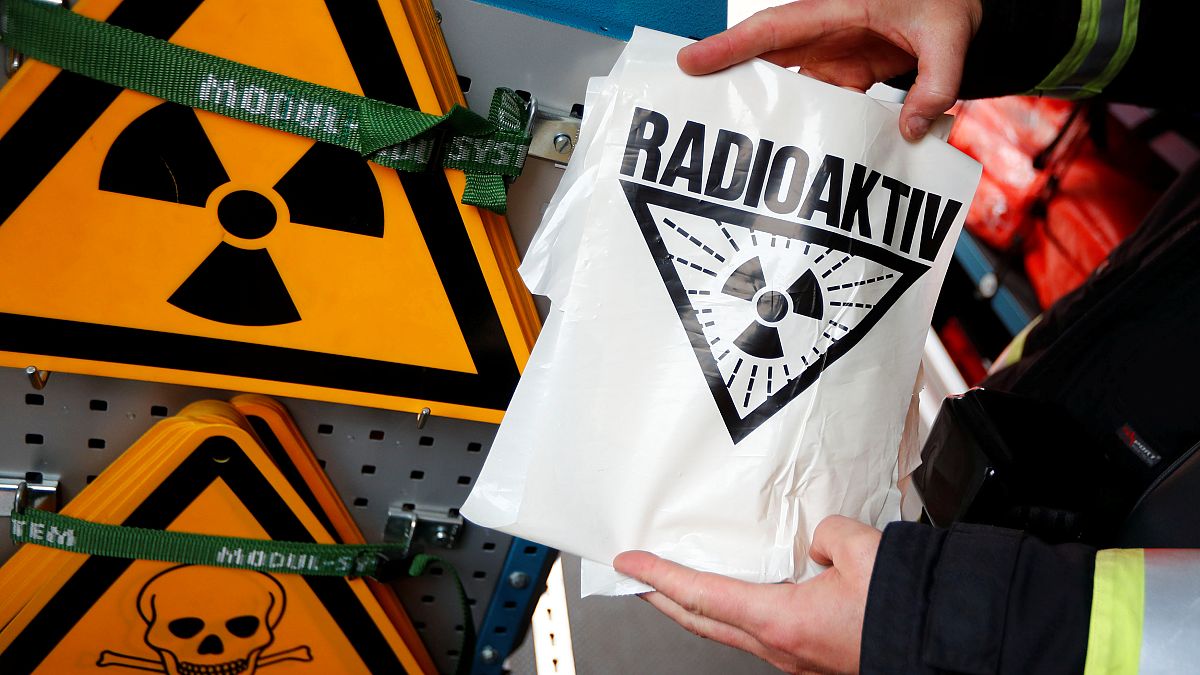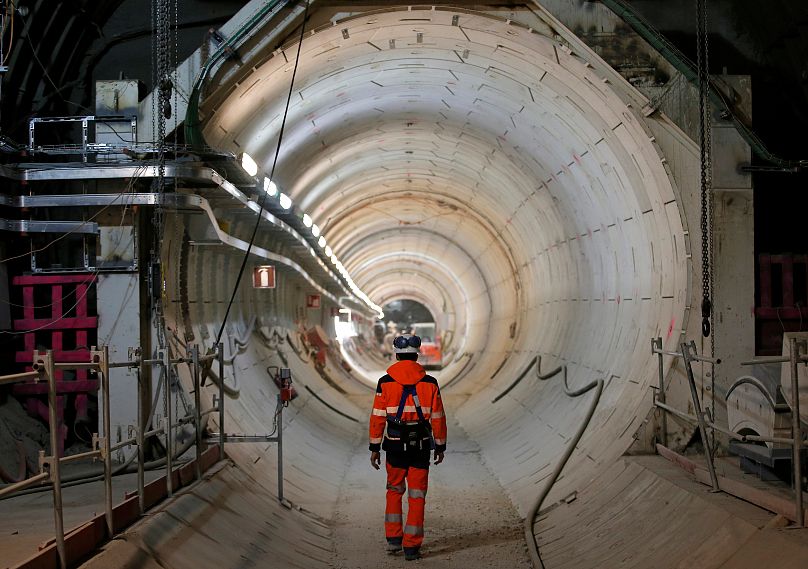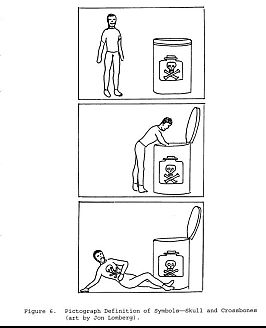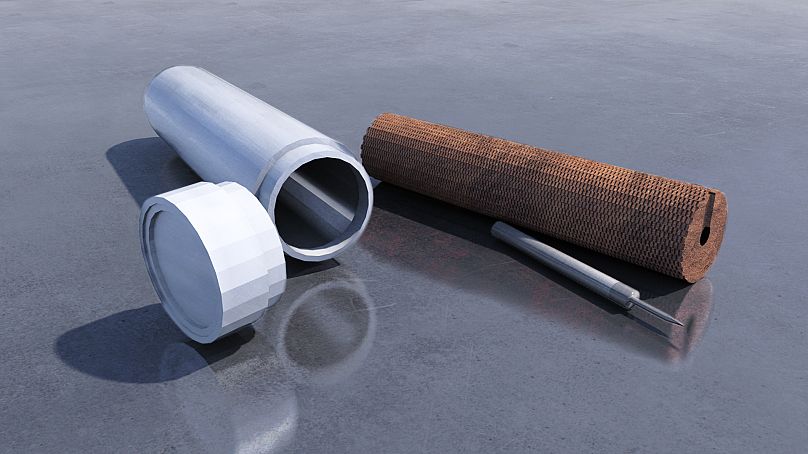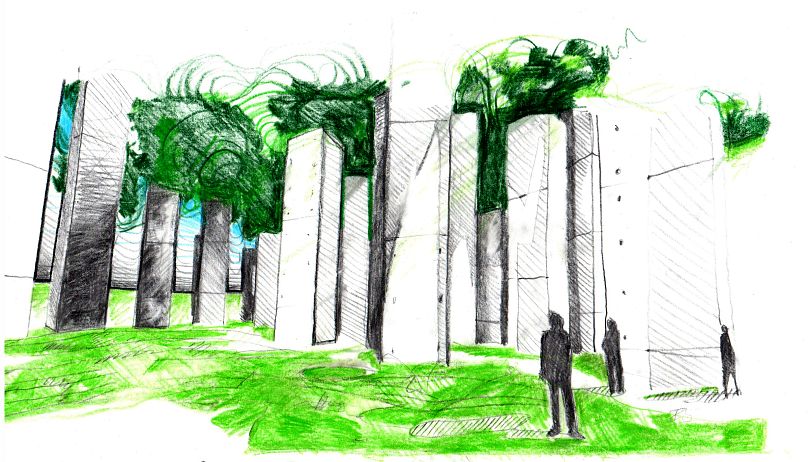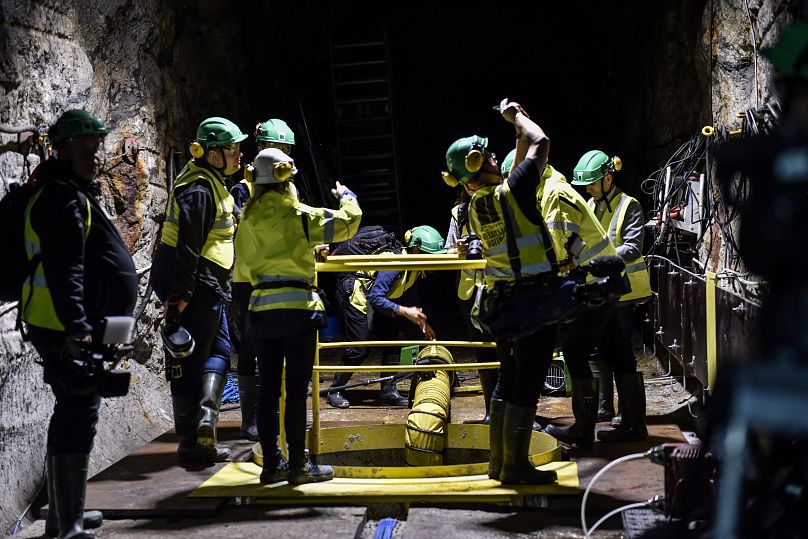Experts are trying to come up with the best way to warn Earth's future inhabitants — whether 10,000 or 100,000 years from now — what precisely lies under their feet.
How should we, in the year 2018, transmit information to our descendants roaming the Earth in the year 12,000 or even 102,000?
This question may not seem the most burning one, but as the world increasingly buries its nuclear waste, a growing number of experts are trying to come up with a way to warn future generations of what, exactly, will be lying under their feet.
And it's not as easy as it seems.
The problem with paper
Deciding where to create nuclear waste storage sites, demarcating them clearly and then writing it all down seems like the obvious solution. After all, mankind started writing down its history 5,500 years ago and the likelihood of us stopping to do so seems slim.
But the question then becomes: what should we write this crucial piece of information on?
Stone and paper deteriorate. USB sticks and servers do, too.
Some government entities, like ANDRA, the French National Agency in charge of managing radioactive waste, have started to record their archive on permanent paper.
Also known as acid-free paper due to its composition, it can remain chemically and physically stable for a long period of time — unlike traditional paper, which starts to yellow and decay over time when exposed to light or heat.
The agency has also built sapphire discs, made out of sapphire and etched with platinum on one side. These can contain up to 40,000 pages of pictures and text and could, theoretically, last for some two million years.
Great! Job done! Right?...Well, not so fast.
Language, after all, is a living, changing entity. That's why it took us decades to decode Egyptian hieroglyphs and why you might have gotten a headache reading Shakespeare's Old English masterpieces in class. So who's to say that French scientists 1,000 years from now will be able to understand la langue de Moliere's current form?
And if that wasn't enough, yet another issue arises: where do you store the information so that future generations can find it? After a fast-speed train derailed in France in 1993, engineers only managed to figure out that it had been caused by the collapse of a WWI tunnel in the area after a former soldier told them of its existence. That piece of information was crucial for engineers to track down the right archived documents.
The OECD's Nuclear Energy Agency (NEA) has since created a working group whose task it is to set the best practices on Radioactive Waste Repository Metadata Management so that all the information is not only stored properly but is also easily accessible as national nuclear waste programmes evolve.
Why it's getting urgent
Preserving information in the long-term should not be seen as the sole responsibility of regulators of waste-management organisations, Dr Gloria Kwong, acting head of the radioactive waste management division at the Nuclear Energy Assembly (NEA) told Euronews.
"What we now have heard from many countries is that at each step when developing a waste facility, you have to listen to people. The social input, the social concern and their exceptions should also be taken into account, even in designing your information management system," she added.
The problem, she warned, is made all the more urgent as some of the people working in the nuclear industry and the waste management sector are getting close to retirement age.
"Everyone has to think about how they can make sure this knowledge is transferred to the next generation of reviewers, regulators, or even waste managers so that they know where the information is," she explained.
But again, how do you do so if traditional means of recording information and the languages we currently use cannot be relied upon?
Why language may fail us
In the mid-1980s, a group of researchers was appointed by the US Department of Energy to work on a knowledge transmission system ahead of the construction of the Waste Isolation Pilot Plant in New Mexico. The plant, which now exists, is the country's only deep geologic repository for nuclear waste.
In a report, the researchers led by Thomas Sebeok of the University of Indiana recommended the creation of a nuclear priesthood, inspired by the Catholic Church, which would relay information down the generations through "a mixture of iconic, indexical and symbolic elements" and "a high degree of redundancy of messages."
Meanwhile, semioticians — experts in the study of signs and symbols as elements of communication — Francoise Bastide, from France, and Paolo Fabbri, from Italy, proposed using genetically-modified cats. The felines, chosen because they're well-loved or even worshipped in some parts of the world, would change colour when near radioactive waste.
Sure.
What about art?
The problem with art, explained Peter Galison, professor of the History of Science and of Physics at Harvard University and author of the Containment documentary, is that if a message is too artistic, then it might not be properly understood as different people may have different interpretations of it.
Pictograms! We already use them to warn against hazards.
True. But as Florian Blanquer explained, just like language, pictograms are symbols which only work if they're based on social conventions. If the underlying social convention fades away, then the symbol's meaning does too.
For instance, you know for sure what the skull pictogram means. If you're thinking death, you're right. Yet this symbol, Blanquer said, "comes from alchemists."
"The skull represents Adam and the crossing bones the promise of resurrection," he revealed. So in the span of just a few centuries this particular pictogram has evolved from meaning resurrection to meaning death.
Great.
Perhaps we could create sort of comic strip of someone who touches nuclear waste and then dies? That would be fairly explicit, right? Again, it runs the risk of being misunderstood, Blanquer warned, because it could be read in reverse: some cultures read from right to left, some from left to right, and others from top to bottom or vice-versa.
Yet for Blanquer pictograms or icons have the best chance of enduring through the generations because "the statue of a cat is not a cat, but it looks like a cat and the pictogram or a plane taking off, looks like a plane taking off." Still, as people understand what they know based on their points of view and experiences, pictograms cannot work on their own as a language, anyone, any time in the future, would recognise.
Blanquer's doctoral proposal is to create a system through which when someone sees an icon, they would also see the object it represents and have to complete an action, requiring the use of the body
His aim is to have "a system that I can then make more complex in order to have people understand what I want them to understand; simply put, that there is radioactive waste under them."
Tell me there's more!
Time capsule
If that seems complicated, others have come up with different solutions, which do not require reading, text or images, at all.
French artist Bruno Grasser, second laureate of a prize launched in 2016 by ANDRA on memory, came up with a way to transmit information on nuclear waste storage sites using etching — an art mastered and used by mankind for thousands of years.
But instead of etching the information into stone which can slowly fade away, Grasser proposes doing the opposite. Some people would be given capsules filled with clay shaped into 2,500 small cubes, each representing a unit of time.
These capsules would be handed down every 40 years and the new owners would then scratch out one of the little cubes, until the capsule if completely smooth.
"It's a countdown of the 100,000 years necessary for the extinction of any risks linked to buried radioactive waste," Grasser explained.
Contemporary Stonehenge
Others wondered about how best to signal that a site contained nuclear waste should we actually fail to transfer the knowledge through the generations of its existence and danger.
As waste can be buried either near or deep under the surface, the signal should be seen both above but also under the ground. The researchers employed by the US Department of Energy in the mid-1980s (who came up with the nuclear priesthood, remember!), had also envisioned different monuments to get the point across: fields of pikes, threatening statues of thunderbolts, or enormous blocs of granite positioned into a tight grid.
Thirty-two years after these proposals and without any prior knowledge of them, Les Nouveaux Voisins, the two architects who scooped the 2016 ANDRA prize, imagined a sort of contemporary Stonehenge — the prehistoric monument in southeast England.
Their proposal involves planting 80 30-metre-high concrete pillars, which would slowly sink into the ground so that oak trees planted at the top of each pillar would replace them as years pass and radioactivity fades. The aim is to make a mark on the scenery and leave a tangible trace above and under the surface of what is there.
Anything else?
The Finnish project of Onkalo took the problem completely differently: what if we came up with a way that would allow us to simply not tell future generations?
Its solution? Digging a deep geological repository for spent nuclear fuel.
"The entire concept of Posiva (the company which manages the project), is that 100 to 120 years after it's been closed, the site will not be signalled. The 500 meters to the storage site in the geological layer will be filled with rock and the entire thing will be isolated and invisible in the natural landscape."
But some have criticised the project, including Florian Blanquer, who described it as a "non-solution."
"It's an appealing idea, sure, but this 'utopia' of being able to say that nothing happened can quickly become a real dystopia," he said.
But Posiva defended itself against questions of ethics (should people be told of possible danger, however small it may be?) and technology (do we currently have the technology to safely store radioactive waste for so long?).
"It would take years to dig with a material that probably doesn't actually exist," a Posiva spokesperson told Euronews. "And the site is not interesting in terms of mining resources.
"Also, you should note that after the next ice age, there will no longer be any city or building in Europe anyway. Everything will have disappeared under two kilometres of ice. So your question (on the necessity to communicate its presence for thousands of years) is completely hypothetical," he added.
Worth noting, though, is that there currently is no scientific consensus on when the next ice age could occur. Some very serious studies put it 1,500 years away, others 100,000 years from now. It's also impossible to say what resources future generations will mine: past examples of technological advances show that what we currently discard as worthless could in the future, be deemed important.
So, that's it?
Pretty much. The good news though is that the world's best experts are working on the problem and they will gather in Paris in January 2019 for a workshop on Information, Data and Knowledge Management organised by the NEA.
A report ahead of a similar conference held in Verdun, France, in 2014 concluded that "the approach of trading the topic of radioactive waste through mystical tales could — despite the criticism — be interesting, as the core of the message can be packaged in stories that deal more with fundamental existential themes (creation, death, size, freedom, etc) and less with daily political or ideological topics."
Remind you of anything?
[Correction: This story has been amended to clarify that the archives were not held in wartime tunnels, but rather that the existence of the tunnels themselves enabled engineers to discover the correct archives.]
